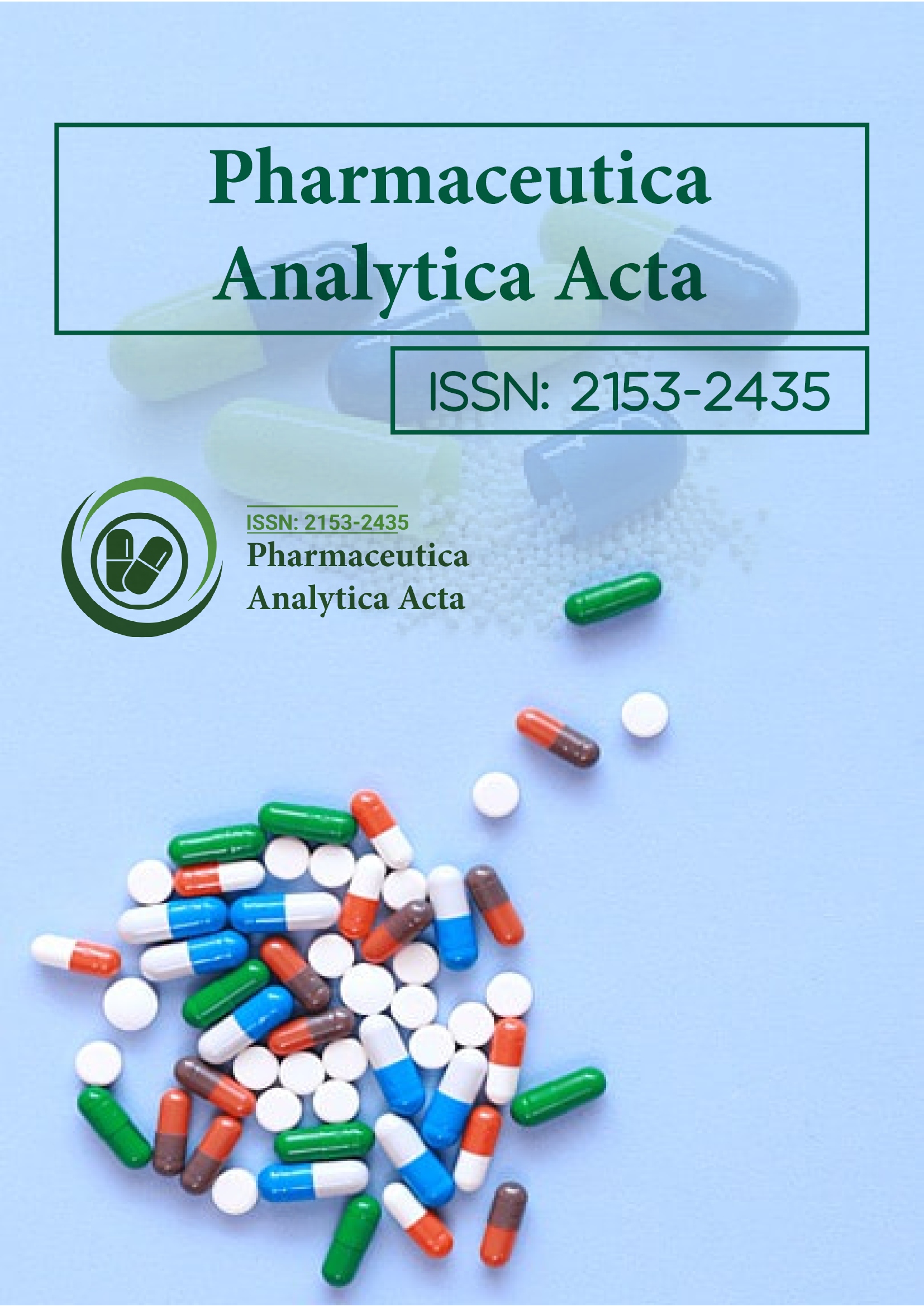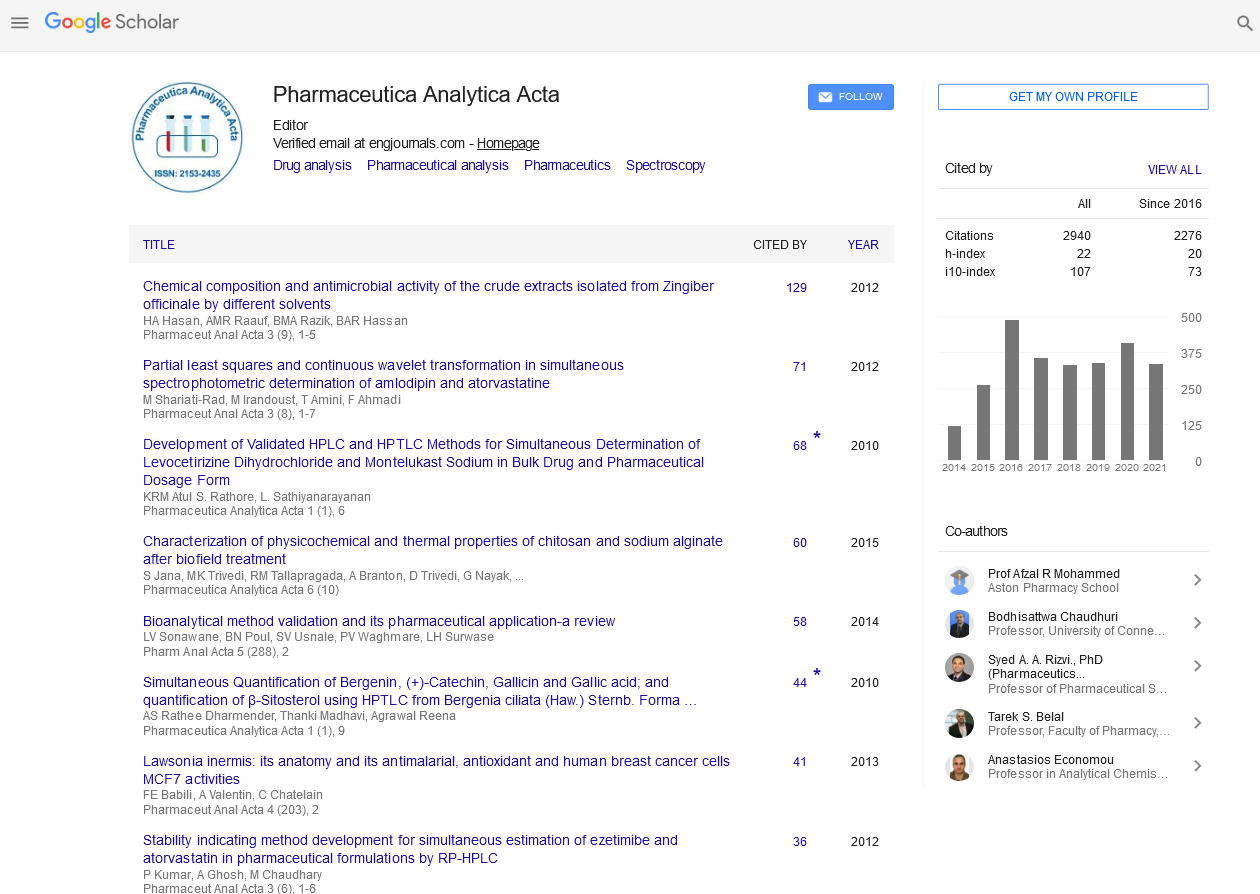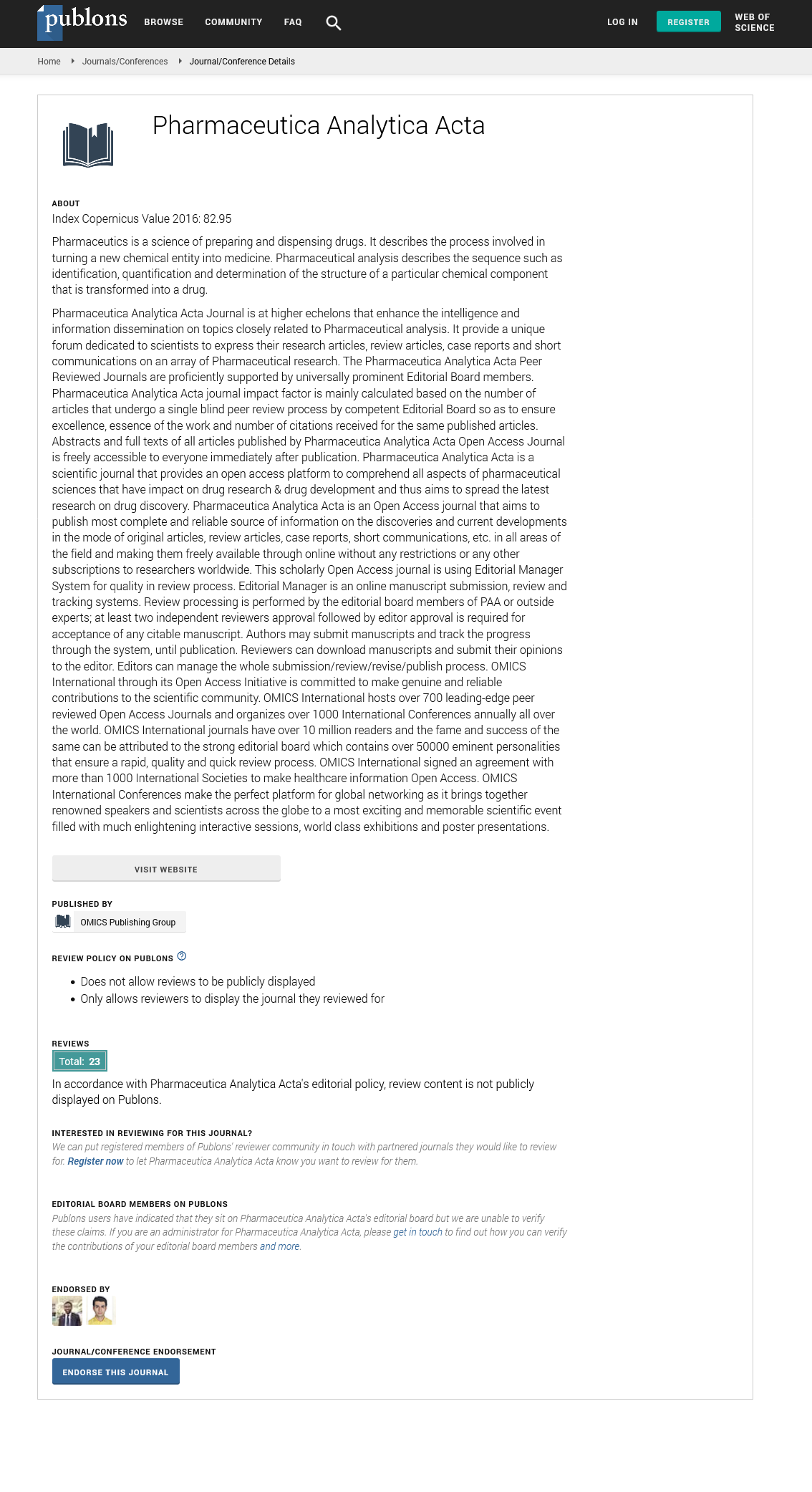Indexed In
- Open J Gate
- Genamics JournalSeek
- Academic Keys
- JournalTOCs
- The Global Impact Factor (GIF)
- China National Knowledge Infrastructure (CNKI)
- Ulrich's Periodicals Directory
- RefSeek
- Hamdard University
- EBSCO A-Z
- OCLC- WorldCat
- Publons
- Geneva Foundation for Medical Education and Research
- Euro Pub
- Google Scholar
Useful Links
Share This Page
Journal Flyer

Open Access Journals
- Agri and Aquaculture
- Biochemistry
- Bioinformatics & Systems Biology
- Business & Management
- Chemistry
- Clinical Sciences
- Engineering
- Food & Nutrition
- General Science
- Genetics & Molecular Biology
- Immunology & Microbiology
- Medical Sciences
- Neuroscience & Psychology
- Nursing & Health Care
- Pharmaceutical Sciences
Opinion Article - (2025) Volume 16, Issue 3
Advances in Bioanalytical Quantification of Therapeutic Agents
Jun Park*Received: 30-Aug-2025, Manuscript No. PAA-25-30229; Editor assigned: 01-Sep-2025, Pre QC No. PAA-25-30229; Reviewed: 16-Sep-2025, QC No. PAA-25-30229; Revised: 22-Sep-2025, Manuscript No. PAA-25-30229; Published: 30-Sep-2025, DOI: 10.35248/2153-2435.25.16.827
Description
Bioanalysis represents a vital bridge between drug chemistry and clinical application, serving as a key discipline that ensures medicines are used safely and effectively. It focuses on the precise measurement of drugs and their metabolic products in biological materials a task that requires an exceptional degree of technical accuracy and methodological discipline. The outcomes of these analyses directly shape dosage guidelines, therapeutic monitoring and overall safety evaluation, making precision and reliability of utmost importance. The field emphasizes the use of validated methods capable of detecting extremely small quantities of active compounds within complex biological environments. One of the greatest challenges in bioanalysis arises from the intricate nature of biological matrices blood, plasma, urine and tissue samples often contain proteins, salts and numerous endogenous substances that can interfere with measurement accuracy. Therefore, specialists devote significant effort to developing extraction and purification techniques that isolate the compound of interest without altering its structure or composition. Among the most widely used techniques are liquid chromatography coupled with mass spectrometry, enzyme-based assays and fluorescence detection methods. Each of these approaches offers distinctive advantages. Liquid chromatography with mass spectrometry provides exceptional sensitivity and making it suitable for detecting trace levels of analytic. Enzymelinked assays enable the rapid screening of large numbers of samples while fluorescence detection is particularly useful for identifying compounds that emit or absorb light at defined wavelengths. The process of verifying the reliability of these methods is highly stringent. Validation involves assessing key parameters such as recovery rate, linearity, selectivity and matrix effects to ensure consistency and reproducibility. Recovery studies evaluate how efficiently a compound can be extracted from a biological sample, while linearity tests confirm that the instrument’s response remains proportional to varying concentrations of the compound. Examination of matrix effects ensures that naturally occurring substances in the sample do not distort the measurement. When all these factors are thoroughly tested, analysts can confidently affirm that the measured concentrations truly represent the actual levels present in the biological system.
Equally significant is the handling and preservation of biological samples, which directly affects the dependability of results. Errors in sample collection, delays in processing, unsuitable storage conditions or repeated freeze thaw cycles can cause degradation, transformation or adsorption of the compound being studied. To prevent such errors experts, emphasize standardized procedures and strict documentation throughout every stage from collection to storage. Detailed records of sampling and handling not only enhance reproducibility across laboratories but also establish data credibility. Consistent and well-documented practices are essential for converting laboratory findings into accurate clinical interpretations regarding therapeutic performance and patient safety. Another integral component of bioanalysis involves the profiling of metabolites. Once administered drugs are often transformed by metabolic enzymes into secondary products some of which may retain therapeutic activity or contribute to unwanted side effects. Identifying and quantifying these metabolites provides critical insight into how drugs behave within the body over time. By understanding these metabolic pathways scientists can evaluate the safety profile predict adverse effects and optimize dosing strategies. Comparative studies often explore differences in metabolism across species or assess how other co-administered substances influence metabolic outcomes. This comprehensive mapping of metabolic transformations ensures that potential risks are recognized and managed before products reach widespread clinical use.
Beyond chemical quantification bioanalysis also incorporates the study of biological markers that reflect pharmacodynamics effects. Measuring specific biomarkers after drug administration allows the establishment of correlations between concentration levels therapeutic benefits and potential toxicities. This integrative approach strengthens the connection between laboratory measurements and real-world clinical performance. By linking chemical concentration data with observed biological responses healthcare professionals gain a more complete understanding of drug efficacy and safety. Recent technological developments have dramatically improved the precision, speed and scope of bioanalytical work. Advances in high-resolution chromatography and mass spectrometry allow scientists to differentiate between compounds with similar structures and to detect even minute quantities of analytic in complex samples. Automated sample preparation systems micro-scale analytical devices and high-throughput screening platforms have revolutionized efficiency reducing time, minimizing sample volumes and enabling simultaneous testing of multiple compounds. These innovations are especially valuable in largescale applications including clinical trials long-term therapeutic monitoring and post-market surveillance where accuracy and speed are both critical. The intersection of bioanalysis with clinical pharmacology underscores its broad importance to modern medicine. Reliable quantification of drugs and metabolites provides essential information for determining appropriate doses identifying variations in patient response and detecting harmful interactions between different medications. Through these contributions bioanalysis forms a fundamental link between laboratory data and clinical practice ensuring that medical treatments are both safe and optimized for effectiveness. Maintaining high standards of validation, transparency and procedural discipline remains central to achieving credible and reproducible outcomes.
Citation: Park J (2025). Advances in Bioanalytical Quantification of Therapeutic Agents. Pharm Anal Acta. 16:827.
Copyright: © 2025 Park J. This is an open-access article distributed under the terms of the Creative Commons Attribution License, which permits unrestricted use, distribution and reproduction in any medium, provided the original author and source are credited


